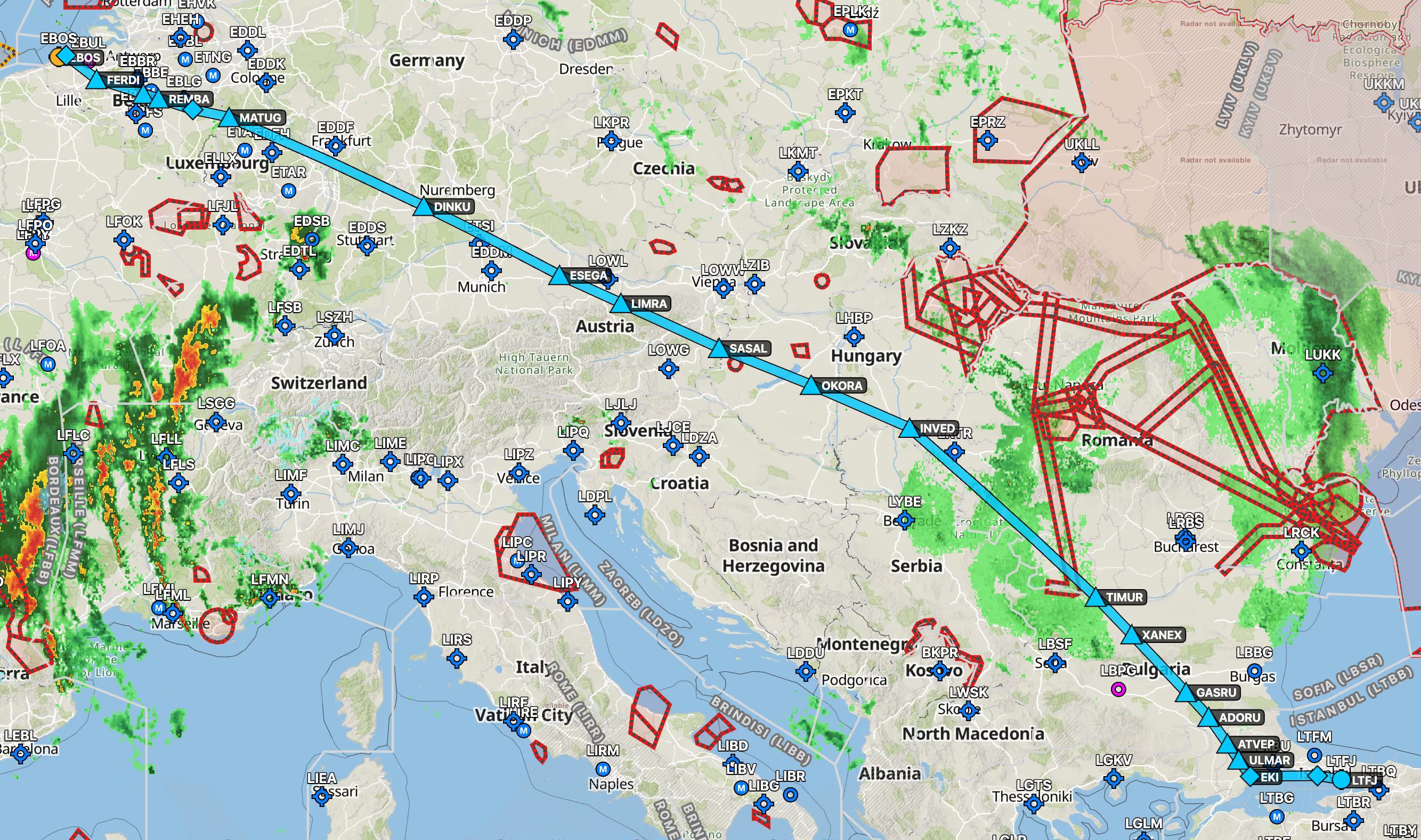How to optimize the flight planning process and tools for efficient aviation workflows

Efficiently planning a flight is an essential aspect of a flight operation, yet it remains a time-consuming and complex process. As regulatory requirements evolve, trips become more complicated, and flight planners and crews often work across multiple systems, the need for a more streamlined flight planning process becomes clear.
In your operation, every minute counts. When planners and crews juggle different systems, those minutes add up, leading to costly delays. Fragmented information not only slows productivity but also increases the risk of miscommunication, missed updates, and human error.
In this blog, we’ll explore strategies to optimize your flight planning workflow, including how digital tools can reduce time-consuming tasks, enhance safety margins, and create more time for critical decision-making.
The reality of flight planning today
Anyone who has spent time in a flight operations center can quickly see that flight planning has evolved beyond basic route selection and weather monitoring. Today, it requires more attention, expertise, and time than ever before.
Route selection complications
Route selection has become increasingly nuanced, going beyond simply finding the most efficient path between two points. Today’s planners must consider weather, airspace restrictions, and security concerns for the flight crew, passengers, and aircraft.
Geopolitical events can suddenly close airspace, requiring last-minute modifications and rerouting. These regions also pose GPS spoofing and jamming risks, often necessitating two planned routes per flight, doubling the time required for each flight plan.
In such a constantly changing environment, what worked yesterday may not work today, adding complexity to what was once a straightforward task.

Sustainability and regulatory compliance
International operations have become particularly demanding as regulatory requirements continue to expand. Flight planners must now track a range of regulatory programs, including the European Union Emissions Trading Scheme (EU-ETS), the Carbon Offsetting and Reduction Scheme for International Aviation (CORSIA), and a mandatory Safety Management System (SMS) for certain operations.
The hidden costs of current workflows
The real challenge of flight planning isn’t managing just a single task—it’s managing the various systems involved in a single flight. Planners frequently find themselves:
- Manually transferring data between flight-planning platforms, scheduling tools, and trip-planning providers
- Cross-referencing multiple sources to verify the most up-to-date regulations in each region
- Maintaining separate documentation for different international authorities
- Repeatedly checking for updates that could affect any part of the flight plan
These fragmented workflows increase the chance of errors and consume valuable time that could be spent planning or optimizing another route. Many flight departments operate 24/7, compounding these inefficiencies over time.
Optimizing the flight planning process
Modern flight operations require a level of efficiency that current workflows often struggle to sustain. While flight planners have developed impressive strategies to manage multiple systems and manual processes, growing operational complexities require a fundamental shift in these workflows.
Common bottlenecks in current operations
Every day is different for a flight planner, but let’s consider what a ‘typical day’ might involve. Logging into multiple systems—one for weather data, another for scheduling, and yet another for route planning—creates inefficiencies from the start.
These inefficiencies compound when managing multiple aircraft. Planners frequently copy data between planning systems and load sheets—a time-consuming process prone to human error. When juggling numerous flights, this manual entry can consume hours that could be better spent on higher-priority tasks.
These repetitive tasks not only slow operations but also pull focus away from critical decision-making and proactive planning. When last-minute changes occur, these fragmented workflows create a domino effect of updates across multiple systems, increasing both the workload and the potential for mistakes.
Leveraging technology for process automation
Modern integrated flight planning solutions can automate many of the repetitive tasks that traditionally consume a planner's day. Route planning, performance calculations, crew communication, and flight plan filing can be handled seamlessly within a single ecosystem.
Consolidating these tasks not only saves time but also improves accuracy. When performance calculations flow automatically between systems, the risk of transcription errors decreases. If routes can be updated and shared with the flight crew instantly as plans change, the need for manual updates across multiple systems is eliminated.
Advanced flight planning solutions also help flight operations become more proactive, addressing potential issues before they impact the schedule.
Streamlining team communication
Flight operations require constant coordination between dispatchers, flight crews, ground handlers, and other stakeholders. Keeping everyone within the same digital ecosystem ensures each team stays in sync and has access to the most essential information. These tools also promote transparency, allowing organizations to learn from decisions and optimize their processes over time.
The path to sustainable operations
Beyond immediate efficiency gains, implementing modern tools lays the groundwork for sustainable growth. Automated workflows scale more effectively than manual processes, and integrated communication adapts more quickly as trip complexity increases.
Most importantly, these improvements give flight planners back the time and mental bandwidth to focus on what they do best—applying their expertise to plan safe, efficient trips and handle unexpected challenges.
Effective flight planning with ForeFlight Dispatch
Flight planners seeking to modernize their operations need solutions that deliver real, measurable improvements to their daily workflows. ForeFlight Dispatch transforms traditional flight planning through an integrated platform that minimizes many of the common frustrations we’ve discussed.
Streamlining daily operations
ForeFlight Dispatch consolidates multiple planning tasks into a single, intuitive interface. Instead of switching between systems for weather analysis, route planning, and performance calculations, planners can access all these tools in one place. This integration dramatically reduces the time spent on routine tasks.
When flight plans need to be adjusted, changes automatically cascade throughout the system. Updating a route simultaneously updates fuel calculations, performance data, and crew briefings. This synchronization eliminates the need for manual cross-checking and repetitive data entry.
Automation that makes sense
ForeFlight Dispatch automation capabilities aim to reduce repetitive tasks while keeping planners in control of critical decisions. For example, planners can automatically:
- Generate route alternatives based on current conditions
- Update performance calculations when aircraft weights change
- File flight plans
- Distribute updated briefings to crew members
This automation frees planners to focus on strategic decision-making and handle non-routine situations requiring expertise.
Transform your operation without disruption
Implementing new technology doesn't have to be disruptive. If your team already uses ForeFlight Mobile, integrating ForeFlight Dispatch is seamless since it builds on top of a platform your team is already familiar with. This makes for a smooth transition with minimal training and virtually no downtime.
Dispatch enables your operation to customize workflows that fit your specific needs and organizational rules while maintaining the standardization necessary for regulatory compliance and operational consistency.
Ready to simplify your flight operations?
Visit our website to discover the impact ForeFlight Dispatch can have on your operation.





